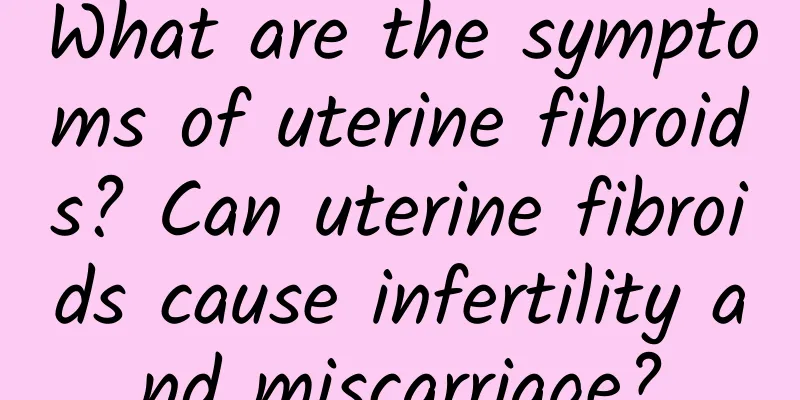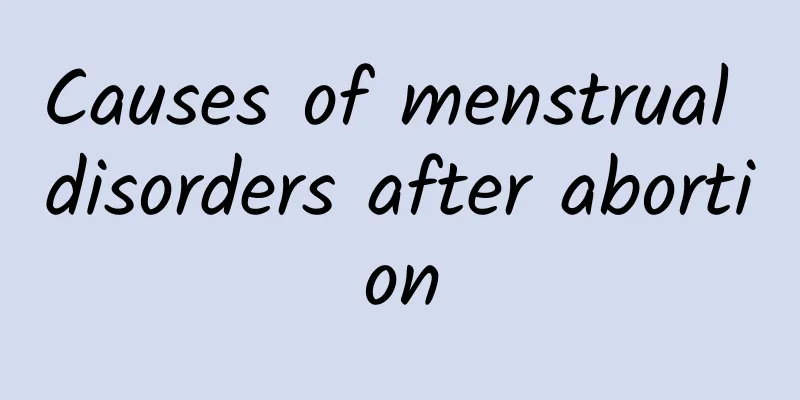What are the symptoms of uterine fibroids? Can uterine fibroids cause infertility and miscarriage?

|
Uterine fibroids are the most common benign tumors of the female genitals. Can women with uterine fibroids get pregnant? This is also a question that many women are concerned about. Experts point out that about 25% to 35% of women with uterine fibroids may not get pregnant. It may be that the fibroids prevent the fertilized egg from implanting, or that the deformation of the uterine cavity prevents the sperm from entering the fallopian tube. If the fibroids are close to the serosal layer, it will have little effect on pregnancy. Symptoms of uterine fibroids: 1. Pain: About 40% of patients with abdominal pain, 25% of patients with backache and 45% of patients with dysmenorrhea. There are also symptoms of lower abdominal swelling or back pain, but the degree is not very serious. Severe and gradually worsening dysmenorrhea is often caused by uterine fibroids complicated by adenomyosis or endometriosis. 2. Leucorrhea: Increased leucorrhea accounts for 411%. 9%. Enlarged uterine cavity, increased endometrial glands, pelvic congestion or inflammation can increase leucorrhea. When submucosal fibroids ulcerate, infect, bleed, or necrotize, a large amount of bloody or purulent leucorrhea will be produced. 3. Uterine bleeding: It is the main symptom of uterine fibroids, occurring in more than half of the patients, including cyclical bleeding, menorrhagia, prolonged menstruation or shortened menstrual cycle. 4. Compression symptoms: mainly occur in cervical fibroids, or fibroids in the lower uterine segment enlarge, fill the pelvic cavity, and compress surrounding organs. When compressing the bladder, symptoms such as frequent urination or dysuria, and urinary retention will occur. Fibroids cause about 30% of compression symptoms, including about 20% frequent urination, about 10% dysuria, 3.5% urinary retention, 5% urinary pain, 5% constipation, and 6% lower limb edema. 5. Abdominal mass: Lower abdominal mass is usually the main complaint of patients with uterine fibroids, up to 69.6%. Sometimes it may be the only symptom of fibroids. It can be touched in the middle of the lower abdomen, and the outline of the fibroid is hard and uneven. In rare cases, it grows rapidly or is accompanied by dull pain, which should be suspected of malignant lesions. 6. Anemia: Anemia may occur in patients with long-term bleeding but not treated in time. 7. Infertility and miscarriage: 30% of patients with uterine fibroids are infertile. Infertility may be caused by treatment or the discovery of uterine fibroids during examination. The spontaneous abortion rate is higher than that of normal people, with a ratio of 4:1. |
<<: Symptoms of uterine fibroids: Can uterine fibroids cause acute abdominal pain?
>>: Symptoms of benign uterine fibroids How to treat benign uterine fibroids
Recommend
Here are some tips for treating dysmenorrhea
In real life, different dysmenorrhea patients may...
The most common treatments for cervical hypertrophy
Gynecological diseases are extremely harmful to w...
The manifestation characteristics of various types of Bi syndrome after abortion
After an artificial abortion, a woman's body ...
What are the causes of uterine fibroids
Among the many tumor diseases, uterine fibroids i...
Necessity of ectopic pregnancy examination
Experts say: It is necessary to check for ectopic...
What are the causes of vulvar leukoplakia
If you are unfortunately suffering from external ...
Analysis of common drugs for cervical precancerous lesions
We all know that although cancer treatment is mai...
Vaginitis can be treated with gynecological douche
Whether to use a douche for vaginitis depends on ...
There is a reason why the incidence of ectopic pregnancy is increasing
The occurrence of ectopic pregnancy should be rel...
To lose weight, you must nourish your spleen first. Here are 3 ways to nourish your spleen and eliminate excess fat! Chinese medicine doctor Wu Mingzhu: Kneel down to lose weight and get rid of fat
I didn’t expect that kneeling could help me lose ...
Does uterine fibroids require surgery? What are the symptoms of uterine fibroids?
How many surgeries are needed for uterine fibroid...
Which is more harmful, taking Yuting or having an abortion
Taking Yuting and abortion are two common methods...
What are the symptoms of posterior uterine wall adenomyosis? Is posterior uterine wall adenomyosis serious?
What are the symptoms of posterior uterine wall a...
Common knowledge about the symptoms of cervical precancerous lesions
Introducing the three common symptoms of cervical...
Can’t get rid of annoying extra fat? Drinking black coffee accelerates fat burning
[Key Points]: Coffee helps with weight loss. The ...









